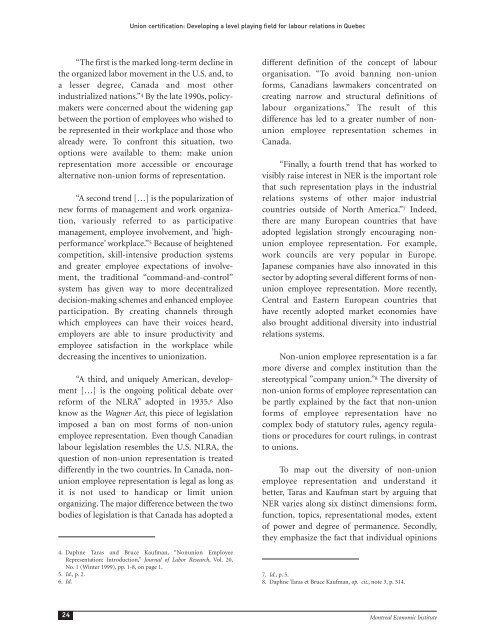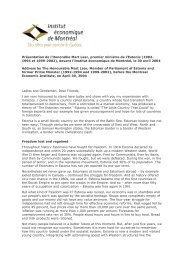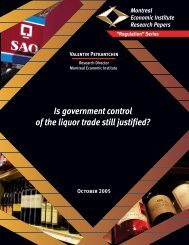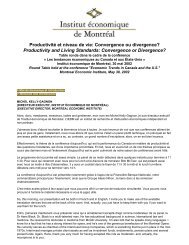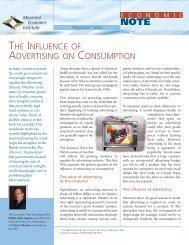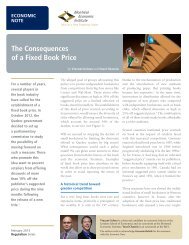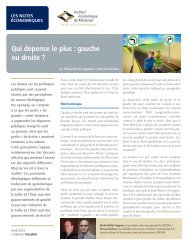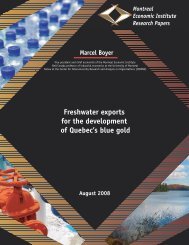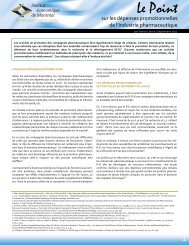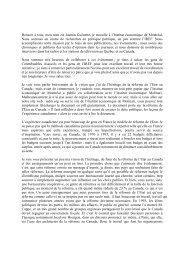Union certification: Developing a level playing field ... - LabourWatch
Union certification: Developing a level playing field ... - LabourWatch
Union certification: Developing a level playing field ... - LabourWatch
Create successful ePaper yourself
Turn your PDF publications into a flip-book with our unique Google optimized e-Paper software.
<strong>Union</strong> <strong>certification</strong>: <strong>Developing</strong> a <strong>level</strong> <strong>playing</strong> <strong>field</strong> for labour relations in Quebec“The first is the marked long-term decline inthe organized labor movement in the U.S. and, toa lesser degree, Canada and most otherindustrialized nations.” 4 By the late 1990s, policymakerswere concerned about the widening gapbetween the portion of employees who wished tobe represented in their workplace and those whoalready were. To confront this situation, twooptions were available to them: make unionrepresentation more accessible or encouragealternative non-union forms of representation.“A second trend […] is the popularization ofnew forms of management and work organization,variously referred to as participativemanagement, employee involvement, and ’highperformance’workplace.” 5 Because of heightenedcompetition, skill-intensive production systemsand greater employee expectations of involvement,the traditional “command-and-control”system has given way to more decentralizeddecision-making schemes and enhanced employeeparticipation. By creating channels throughwhich employees can have their voices heard,employers are able to insure productivity andemployee satisfaction in the workplace whiledecreasing the incentives to unionization.“A third, and uniquely American, development[…] is the ongoing political debate overreform of the NLRA” adopted in 1935. 6 Alsoknow as the Wagner Act, this piece of legislationimposed a ban on most forms of non-unionemployee representation. Even though Canadianlabour legislation resembles the U.S. NLRA, thequestion of non-union representation is treateddifferently in the two countries. In Canada, nonunionemployee representation is legal as long asit is not used to handicap or limit unionorganizing. The major difference between the twobodies of legislation is that Canada has adopted a4. Daphne Taras and Bruce Kaufman, “Nonunion EmployeeRepresentation: Introduction,” Journal of Labor Research, Vol. 20,No. 1 (Winter 1999), pp. 1-8, on page 1.5. Id.,p.2.6. Id.different definition of the concept of labourorganisation. “To avoid banning non-unionforms, Canadians lawmakers concentrated oncreating narrow and structural definitions oflabour organizations.” The result of thisdifference has led to a greater number of nonunionemployee representation schemes inCanada.“Finally, a fourth trend that has worked tovisibly raise interest in NER is the important rolethat such representation plays in the industrialrelations systems of other major industrialcountries outside of North America.” 7 Indeed,there are many European countries that haveadopted legislation strongly encouraging nonunionemployee representation. For example,work councils are very popular in Europe.Japanese companies have also innovated in thissector by adopting several different forms of nonunionemployee representation. More recently,Central and Eastern European countries thathave recently adopted market economies havealso brought additional diversity into industrialrelations systems.Non-union employee representation is a farmore diverse and complex institution than thestereotypical ”company union.” 8 The diversity ofnon-union forms of employee representation canbe partly explained by the fact that non-unionforms of employee representation have nocomplex body of statutory rules, agency regulationsor procedures for court rulings, in contrastto unions.To map out the diversity of non-unionemployee representation and understand itbetter, Taras and Kaufman start by arguing thatNER varies along six distinct dimensions: form,function, topics, representational modes, extentof power and degree of permanence. Secondly,they emphasize the fact that individual opinions7. Id., p.5.8. Daphne Taras et Bruce Kaufman, op. cit., note 3, p. 514.24Montreal Economic Institute


